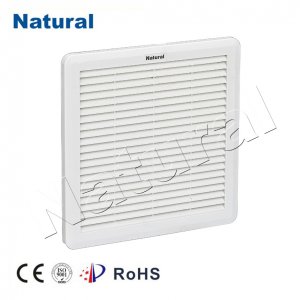In today’s fast-paced world, where industrialization and urbanization continue to flourish, the quality of the air we breathe has become an increasingly critical concern. Poor air quality can have a detrimental impact on our health, well-being, and the environment. To combat this issue, two unsung heroes often work tirelessly behind the scenes: the fan and the filter. In this article, we will delve into the vital roles these two components play in maintaining air quality and how they work together harmoniously.

The Importance of Air QualityBefore we dive into the details of fans and filters, it’s essential to understand why air quality is so crucial. Clean, fresh air is essential for human health and comfort. Poor air quality can lead to a wide range of health problems, including respiratory issues, allergies, and even more severe conditions such as lung cancer. Furthermore, polluted air can harm the environment by contributing to climate change and damaging ecosystems. The Role of the FanThe fan, a seemingly simple device, plays a fundamental role in air quality control. Fans are responsible for moving air from one place to another, and in the context of air quality, this movement is crucial. In ventilation systems, fans ensure that stale or polluted air is expelled from a building, making way for fresh outdoor air to enter. They also play a vital role in industrial processes by controlling the dispersion of pollutants and maintaining a safe working environment. Fans come in various sizes and types, each designed for specific applications. Axial fans, for instance, are commonly used in residential HVAC systems, while centrifugal fans are ideal for industrial settings due to their higher airflow capacity and pressure capabilities. The Role of the FilterFilters are the unsung heroes that trap and remove contaminants from the air, making it safer to breathe. Air filters come in a variety of types and efficiencies, each suited to specific air quality needs. Common types include fiberglass filters, pleated filters, and HEPA filters, with HEPA (High-Efficiency Particulate Air) filters being the gold standard for removing tiny particles, including allergens and pathogens. In residential settings, air filters are typically found in HVAC systems, where they capture dust, pollen, pet dander, and other airborne particles. In industrial settings, filters may be used to remove hazardous chemicals, fumes, or particles generated during manufacturing processes. Filters need regular maintenance and replacement to continue effectively improving air quality. The Synergy of Fan and FilterFans and filters work hand in hand to create an effective air quality control system. Fans ensure that air circulates through the filter, allowing it to capture contaminants. The fan then expels the filtered air back into the environment, promoting a continuous cycle of fresh, clean air. This process is crucial in maintaining indoor air quality, whether it’s in homes, offices, or industrial facilities. Efficiency is key when it comes to this duo’s performance. Properly sized fans and filters are essential to ensure that air is adequately circulated and contaminants are effectively removed. An undersized fan may not move enough air through the filter, while an oversized fan can cause excess turbulence, reducing filter efficiency. ConclusionIn the quest for cleaner air, we often overlook the silent heroes that work diligently behind the scenes: the fan and the filter. These two components, when used correctly and in harmony, play a vital role in maintaining air quality and ensuring the well-being of individuals and the environment. Whether in our homes, workplaces, or industrial facilities, the dynamic duo of fan and filter silently stands guard, safeguarding our health and the quality of the air we breathe. So, let’s appreciate the importance of these unassuming devices and the pivotal roles they play in creating a healthier, safer world for all.